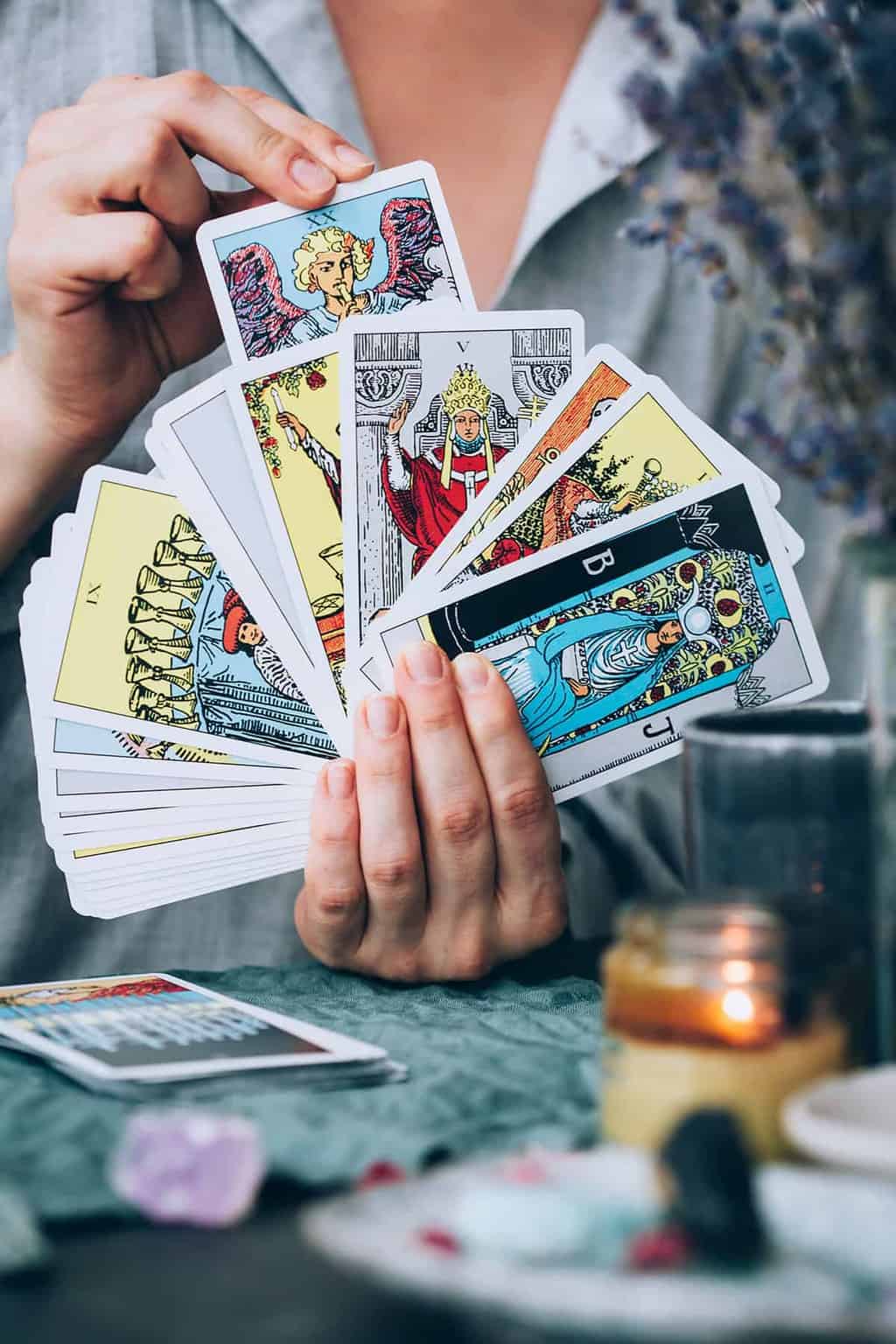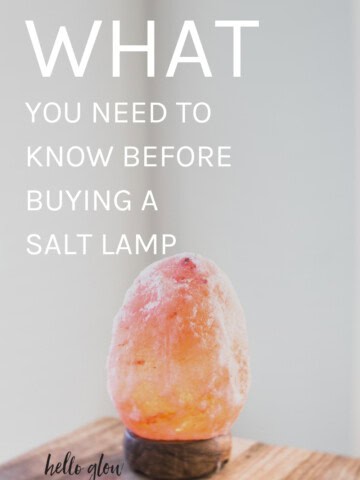There was a time when tarot cards (or oracle cards) were considered to be the occult tools of mystics and witches. In more recent years, they have made their way into mainstream culture with surprising accessibility and relevance. Yoga studios and health food shops (and pretty much anywhere that you can buy crystals and sage bundles!) are now regular purveyors of the most beautiful and inspirational decks, many of which are designed by independent artists and diverge from the more traditional (read: often sexist, and sometimes scary!) imagery.
Many people assume that in order to use tarot or oracle you must have some divine gift or specialized training, but truth be told all that is needed is the ability to listen to your intuition and to trust your gut feelings. In a society such as ours, which tends to emphasize the importance of looking to outside world to guide our choices and actions, we can inadvertently numb our connection with our own inner voice.
Reading tarot cards can be a profound exercise in reconnecting with the more subtle messages of the self, and the things we know to be true deep inside. I have spent the last few years getting to know the tarot, and now reach for them daily for guidance and to help me tune into my inner wisdom. In the process, they have become an essential part of my personal self-care routine.
How to use tarot cards for inner wisdom
Tarot decks have seventy-eight cards, each carrying a generally agreed-upon meaning, and they are often used in spreads and divination. Twenty-two are Major Arcana cards (major events and themes that have a larger impact on your life, or that may be more karmically tied to your path), and fifty-six are Minor Arcana cards (concerning daily business, everyday actions), which are further divided into four suits much like playing cards (swords, pentacles, cups and wands).
If you’re feeling curious and would like to give card-reading a try, you’ll first need to find a deck that suits your style and intention. Do you want a traditional deck with classical imagery such as the Rider-Waite (think men with swords to represent conflict, a skeleton on a horse symbolizing death), or something more aligned with the divine feminine such as the Goddess Tarot? Do you resonate with cards steeped in symbolism so that there is wealth of content to uncover, such as the Thoth or the Golden Tarot, or would you rather use cards with one simple image to guide you, such as the beautiful Wild Unknown deck? There are so many options, but it’s important that you work with a deck that you will enjoy, and feel a positive connection with.
Oracle decks, as opposed to the more structured tarot, can have any number of cards and tap into different symbols and archetypes to convey their messages and meanings. Some oracle decks reference spirit animals, while others may focus on birds, crystals, goddesses, angels, or even famous artists! These decks can be really innovative and fun, and since they are quite straightforward, they are a great choice for simple card-a-day guidance, or for beginners.
Once you have chosen your cards, consider folding them into a regular mindfulness practice, at the beginning or end of your day. Find a clean, clear space to keep your cards, maybe setting them with some of your favorite crystals. If smudging is your thing, clear the air before you do a reading. Take some deep breaths and focus on your question or intention. Knowing what to ask and how to ask it is important. I would recommend avoiding the fortune-telling approach, and steering clear of yes/no questions because the meaning of the cards is so varied and complex.
Also, remember that the future is fluid and we are free to make our own choices—the actions you take after each reading can alter outcomes of predictions. Look to the cards instead as a source of empowerment, and consider questions that could guide you towards positive actions, and those that inspire you to follow your gut.
If you feel connected to the idea of a universal energy or spirit guides, you may also see your daily reading as a way to listen to your guides, or to align with your higher or best self. When I turn to my cards, I feel as if I am listening to the wise woman inside, and am able to find solace tuning in to messages that encourage steps forward in the direction of growth and healing.
Here are some questions you may want to consider asking your cards:
- Where do I need to be focusing more of my energy at this time?
- What stale pattern or stagnant energy is holding me back and preventing my growth?
- What message am I meant to receive today?
- What does my intuition want to bring to my conscious mind at this time?
- What course of action is most aligned with my best self and overall wellbeing?
- In what ways might action X affect those closest to me?
Keep your questions simple, trust your understanding, and come back to the guidance you’ve received throughout the day. And here’s another tip: don’t second guess your card and assume that you must have “pulled wrong.” Dig deeper for the connection, and the message will be revealed. There have been a few instances when I asked a question and pulled a card I felt was unsatisfactory—I replaced the card and reshuffled, only to draw the same card again… three times in a row! Trust that the first one is the right one.
Once you’ve decided on your question, shuffle your deck until you feel it’s right to stop, and select your card. Spend time with the imagery, take some notes on thoughts that come up for you. Notice what you’re feeling as you look at the card. What do you instinctively know about the symbols, and how might your gut feelings or reactions to the card have something to tell you? When you draw cards such as Death or The Tower, remember that the cards are not literal, and that they are messages of change, and of a necessary growth and letting go. I’ve learned over time not to fear any one card, that their meanings are often subtle and encourage reflection. If you do have the urge to uncover the more nuanced elements of the cards, there is a wealth of information online—websites, blogs and forums— and books to help.
Another way that you may like to use your cards is to incorporate them into a “manifesting protocol.” Much in the way that a vision board can help you to focus energy towards your goals, you can select a card that embodies a quality that you would like to encourage more of in your life (much like an affirmation), and set it out someplace special where you will see it and be able to spend time with the feelings it evokes. When I went through my separation, for example, I set out the Strength card. The image of the woman taming the lion was a powerful one for me. It was like a voice inside whispering “be strong” whenever I’d see it. When used in this way, the cards can encourage positive shifts and healing in our lives.
If you’ve been curious about the tarot, but have been afraid of “pulling the death card” (that was me once!), know that they have the potential to become a creative component of your self-empowerment plan. Let them to serve as a reminder that you are an agent of change rather than a passive victim of fate. Use the cards as an exercise in trusting yourself and your truth. It’s like raising your antennae to the universe, and hearing more clearly the wise whispers inside.
1








Christina Joch says
Hello, what´s the decks name used in your pictures? Thanks for help!
Riya says
so nice
tarun says
its great
arun says
nice info.
sonu says
wow
Tracy Thomas says
I have used the Tarot a few times, I have pulled the Death Card a few times...what happened next changed my life! Sometimes for the better, but mostly it was a time of major change for me, and growth!!! Fear not! I still don't feel confident even though my messages turned out to be right on. Don't second guess is probably the best advice! Thank you for this post I think I might try to use the Tarot in the ways you suggested!